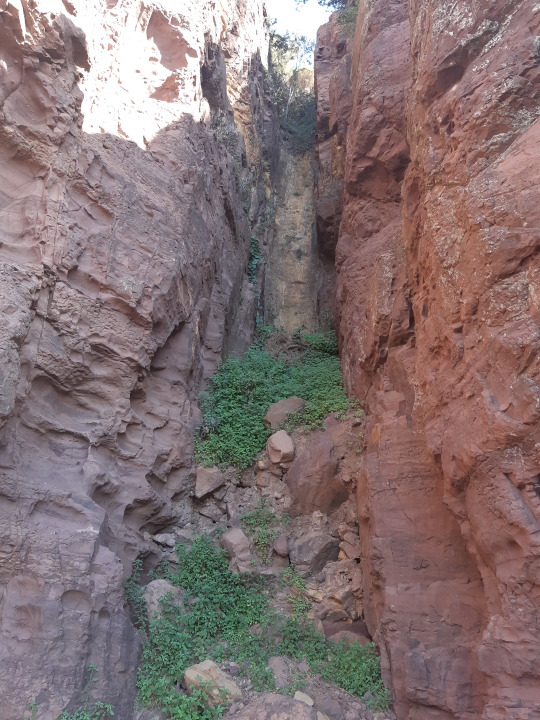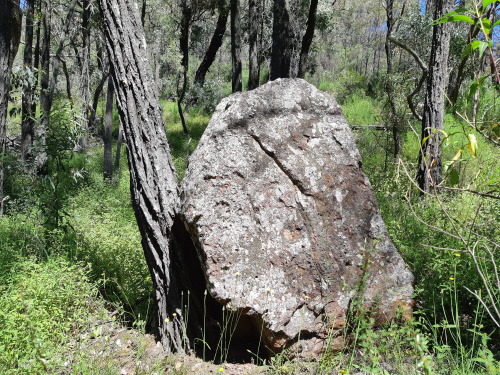#warrumbungle
Dykes and landscapes
Dykes most frequently occur as igneous rocks which once were liquid magma that intruded older rocks. Dykes form as sub-vertical to vertical linear sheet-like features and can be millimetres to kilometres wide.
Dykes can contribute to formation of interesting landscape features. For example, in above photograph, the dyke was more resistant to weathering and erosion than the rock it intruded, and so, it gave rise to a tall protruding wall known as the Breadknife, the Warrumbungle National Park. Whereas, in the photograph below, the dyke is less resistant to weathering and erosion, and so erosion of the dyke resulted in formation of a slot or a gully in the cliff near Kiama, south coast NSW.
Erosion of surface features (such as rocks) at different rates is referred to as differential erosion.

Post link
Eroded volcanic landscape. Approximately 15 million years ago this used to be a shield volcano (similar in structure to Hawai’i), but since its volcanism stopped the erosion has exposed the sides of the volcano. The most pronounced features are an ancient magma chambers. These would either feed magma to eruptions occurring on the surface or pulses of magma that did not make it to the top and have slowly crystallized at depth.
Warrumbungle National Park, Australia
Post link
When rock and paper end up with the TIE…
Rockfalls occur when rocks in the cliff face or a steep slope are destabilized and fall due to gravity pull. This can range from few rocks rolling down the hill to a massive rock avalanche that destroys the village. Either way, such moving rocks or a boulders can pick up speed and move with a lot of force, this can be damaging to anything that gets in their way. Bigger rockfalls can completely strip surface vegetation, knock down and uproot trees, damage soil and initiate erosion etc.
Surprisingly, this tree was strong enough to withstand the impact of this multi-tonne boulder rolling down.
Warrumbungles National Park, Australia
Post link
This wall-like feature is a left over from a plumbing system of an ancient volcano and is called a dykeordike. When this volcano was active, this dyke would have served as a duct through which magma was transport to feed the surface lava eruption, or alternatively it could have been an off-shoot from the magma chamber that froze up within a body of a volcano.
Now, ~15 million years later the erosion has removed much of this volcano and so its internal magma plumbing system is nicely exposed and is dominated hard crystalline rocks which are much harder to erode. Thanks to this contrast in erosion we have a beautiful landscape of the Warrumbungle National Park.
Post link




